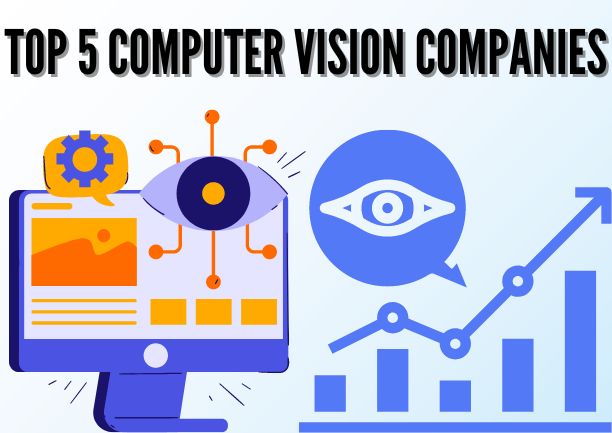
Singapore has emerged as a global hub for technological innovation, and one of the most exciting fields gaining traction in the region is Computer Vision. This branch of Artificial Intelligence (AI) allows computers to interpret and make decisions based on visual data, revolutionizing industries from healthcare to retail. In this article, we’ll explore the top 5 computer vision companies in Singapore, highlighting their unique contributions and innovations.
1. ViSenze
The visual search and image recognition technology pioneer ViSenze develops AI solutions that serve mainly retail businesses operating in e-commerce space. Online shoppers can lever ViSenze to search for products through images instead of keywords so the platform delivers enhanced user experiences with better conversion rates. Via its proprietary algorithms the company evaluates and creates tags for images which enables retailers to suggest relevant products to their customers.
The company has achieved broad industry adoption from global e-commerce conglomerates while their partnership deals with Amazon Alibaba and Rakuten demonstrate their market dominance.
Key offerings:
The visual search solution enables customers to find items through image uploads.
The product tagging and recommendation system uses automated tagging to facilitate efficient catalog management.
Contextual Advertising relies on image recognition to find the most suitable ad placements.
2. Vizzio Technologies
The core business at Vizzio Technologies involves developing 3D visualizations through computer vision operations. The work of Vizzio Technologies affects architecture and urban planning and simulation modeling the most. Vizzio Technologies constructed precise virtual city models of full urban areas which enable governmental departments and urban planners to observe and modify city design elements while the system operates in real-time.
Vizzio achieves precise three-dimensional models of interior and exterior spaces through the combination of space-based images with LiDAR data processing and sophisticated computer vision processing methods. Before implementing these applications one can utilize the obtained data to develop smart cities and manage infrastructure needs as well as perform disaster simulations.
Key strengths:
3D City Modeling: For urban planning and smart city development.
Virtual Twin Technology: Offering a digital replica of the physical environment.
AI-Driven Simulations: For disaster preparedness and infrastructure management.
3. Clarion Analytics
The computer vision market leader Clarion Analytics invests its specialized knowledge to enable innovative changes across healthcare along with finance and construction sectors. The company delivers state-of-the-art solutions to businesses which help them understand complicated visual data by implementing deep learning and data analytic and machine learning approaches.
Clarion Analytics develops precise scalable computer vision models which display outstanding accuracy metrics. The company holds a notable accomplishment through its creation of AI-based medical imaging anomaly detection systems which support doctors for more effective diagnosis. Clarion’s key advantage stems from its XAI Explainable AI technology which allows both automated task management and decision rationale explanation to businesses.
Key areas of expertise include:
Research groups use this technology to detect objects and recognize them for industrial utilization and retail commerce.
Healthcare Imaging Solutions: AI-based diagnostics for early disease detection.
Safety compliance gets continuous real-time monitoring through Construction Safety Analytics which watches construction sites.
4. Trakomatic
Information derived from customer conduct patterns enables Trakomatic to help businesses through their retail analytics and smart city solutions platform and the use of computer vision technology. Their solutions combine cameras that track facial recognition and object tracking algorithms for real-time analysis of traffic patterns including customer information and buying behaviors.
The technology from Trakomatic has become standard in airports along with malls together with large public locations which rely on visitor flow data for their facility upgrades and service enhancements. The real-time analytics function lets businesses take data-based decisions which strengthen customer satisfaction through improved operational performance levels.
Core features:
Customer Behavior Analytics: Monitoring foot traffic, engagement, and demographics.
Please note that facial recognition gives users both personal-service-based experiences along with security features.
Smart City Applications: Including traffic management and crowd control.
5. Graymatics
The video analytics platform of Graymatics operates through computer vision technology to process vast amounts of video material. The platform from Graymatics functions for multiple applications that include smart surveillance alongside media content categorization. The solution from Graymatics automates video insight retrieval operations to reduce operational costs and save employees time.
Graymatics implements its solutions in various fields including security alongside media and telecommunications departments. The innovative processing of video data through their system implements automated suspicious activity alerts and media tagging while increasing operational efficiency for security and media systems.
Highlighted solutions:
Smart Surveillance: Real-time detection of security threats.
Content Management: Automated video categorization for broadcasters.
Incident Response Systems: AI-driven alert systems for public safty.
Conclusion
The growing tech sphere of Singapore has developed leading computer vision corporations which deliver distinct industry solutions worldwide. These technology companies will become progressively important for changing the direction of AI and automation development both in Singapore and worldwide as computer vision evolves. These pioneers reshape how human beings interpret and respond to visual content within retail sectors and healthcare fields and urban development environments.
